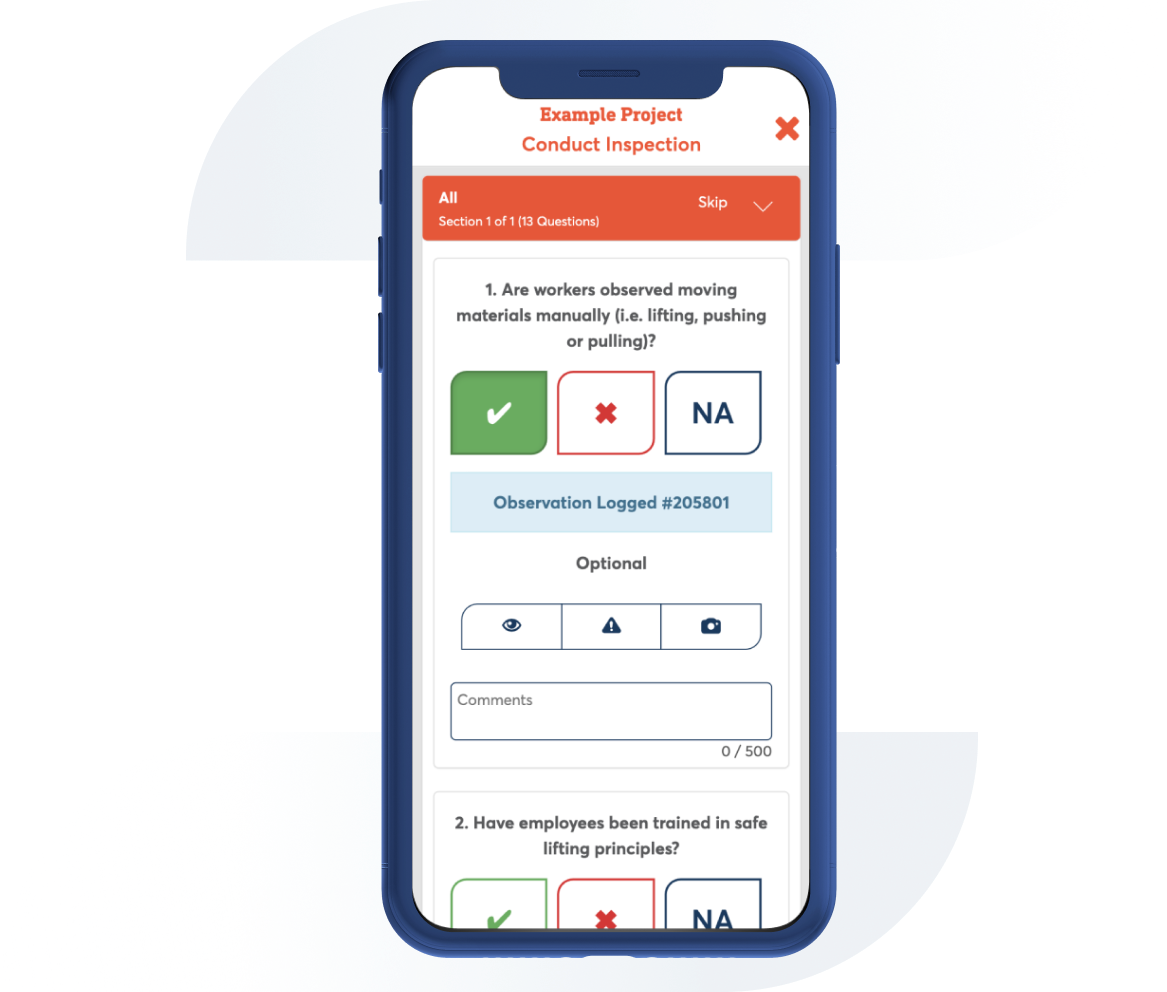Struck-by Hazards in the Workplace Inspection
Contributor: Safesite HQ Jurisdiction: OSHA
Use this inspection to complete a struck-by hazard assessment. A struck-by incident is when a person is struck by an object or equipment. Struck-by hazards are categorized as flying, falling, swinging, and rolling objects.

Template Preview
1. Are work and storage areas free of excess debris, trash, and other unnecessary material?
Actions
2. Are all walkways free from debris, spills, and other potential trip hazards?
Actions
3. Are shelving units organized and free of trash and other debris?
Actions
4. Are walkways, aisles, stairwells and passageways used by workers properly illuminated?
Actions
5. Are all materials stored in tiers secured to prevent sliding, falling or collapse?
Actions
6. Is lumber stacked in a way to be self-supporting and stable?
Actions
7. Are scaffolds free of materials that are not needed for immediate operations?
Actions
8. Are materials, equipment, and tools secured when not in use?
Actions
9. When power operated tools are designed to accommodate guards, are they equipped with such guards when in use?
Actions
10. Is the overhead door either all the way up or all the way down?
Actions
1. Are legible traffic control signs posted and protected by traffic control devices?
Actions
2. Are legible work areas signs posted, clearly designating a work zone area?
Actions
3. If there are overhead hazards present (low beams, pipes, or overhead work platforms), is there signage present to alert personnel of potential hazards?
Actions
4. During loading/unloading operations, is a parameter set up to alert personnel of activity?
Actions
5. When employees are grinding, welding, or cutting, are flame proof screens (or curtains) used to sheild other persons working in vicinity?
Actions
6. Is all signage in good condition (legible and clear)?
Actions
1. Have all mobile equipment gone through a daily inspection before use?
Actions
2. Any guarding missing on mobile equipment?
Actions
3. Does all mobile equipment have a functional horn?
Actions
4. When traveling with a load, is the load strapped securely?
Actions
5. When the overhead crane is finished operating, is the hook moved out of the work area?
Actions
6. Is a signal person assigned to mobile equipment operators (crane operators)?
Actions
1. Are toeboards, screens, or guardrails systems in place to prevent objects from falling to a lower level?
Actions
2. If guarding is not in place to prevent falling objects, are barricades erected in area where objects could fall, prohibiting employees from entering the barricaded area?
Actions
3. Is a Stop Work Authority policy in place at the company? While a policy is not required, it is recommended that one is in place and discussed with personnel.
Actions

Can't find what you are looking for?
